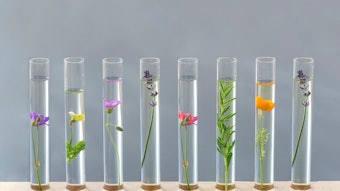This poem, by the Greek poet Sappho, written over 2,500 years ago, is only an indication of the kind of admiration that has been bestowed on the rose over the centuries. Roses have been used in religious ceremonies by various peoples throughout the ages. The rosary, or string of prayers, was first made by stringing rose hips together. Rose hips, very high in vitamin C, are used for making jam that is both tasty and nutritious. Of course, the rose has long been a symbol of romance. Few will doubt that a single rose can capture the heart of any woman, young or old.
However, these bits of trivia, while interesting, are only small facets of the natural wonder of the flower. Its beauty can only be half appreciated by the eye. Its fragrant scent has pleased the nose of man and woman since long before recorded history and long before they knew they had an olfactory epithelium. For roses have been around for quite a long time. The oldest fossil imprint, found in Colorado, dates back about 40 million years.
There are over 13,000 identifiable varieties of roses. The best known and most popular are hybrid tea roses. These are the result of cross breeding for size and color without specific regard to odor. In fact, while appearance and color may have been improved, the fragrance of the hybrid tea rose is often poor, or in the worst cases nonexistent. Two other varieties of roses have gained prominence with perfumers. They are Rosa Centifolia (rose of 100 petals) and Rosa Damascena.










